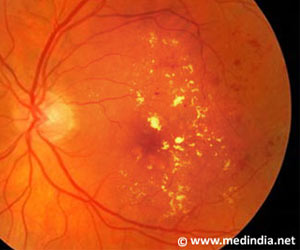The most thorough description of gene expression in the human retina reported to date was published by investigators at Massachusetts Eye and Ear and Harvard Medical School.

In a more surprising result, Dr. Farkas and colleagues identified almost 30,000 novel exons and over 100 potential novel genes that had not been identified previously. Exons are the portions of the genome that are used to encode proteins or other genetic elements. The investigators validated almost 15,000 of these novel transcript features and found that more than 99 percent of them could be reproducibly detected. Several thousand of the novel exons appear to be used specifically in the retina. In total, the newly detected mRNA sequence increased the number of exons identified in the human genome by 3 percent.
"While this may not sound like a lot, it shows that there is more to discover about the human genome, and that each tissue may use distinct parts of the genome," said Dr. Pierce, Director of the OGI and the Solman and Libe Friedman Associate Professor of Ophthalmology, Harvard Medical School.
This work is valuable to help scientists understand how the retina works, and how it is affected by disease. For example, Dr. Pierce and colleagues in the OGI study inherited retinal degenerations, which are common causes of vision loss. These diseases are caused by misspellings or mutations in genes that are needed for vision. To date, investigators have identified more than 200 retinal degeneration disease genes, but still can't find the cause of disease for up to ½ of the patients affected by these disorders. Identification of new exons used in the retina may help find the cause of disease in these patients. The transcriptome data can be viewed via the OGI website at http://oculargenomics.meei.harvard.edu/index.php/ret-trans.
Identifying the genetic cause of patients' retinal degeneration has become especially important with the recent success of clinical trials of gene therapy for RPE65 Leber congenital amaurosis (LCA). As a follow-up to these initial proof-of-concept trials, clinical trials of gene therapy for 4 other genetic forms of inherited retinal degeneration are currently in progress. Further, studies in animal models have reported successful gene therapy for multiple additional genetic types of IRD. There is thus an unprecedented opportunity to translate research progress into provide sight preserving and/or restoring treatment to patients with retinal degenerative disorders.
Source-Eurekalert











